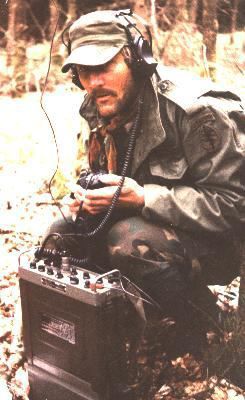 I’ve been asked by several readers which compass I use and why I chose it. My primary compass is the Suunto MC-2, my alternate compass is a Suunto A-10 and the compass in my survival kit is a little Brunton Globe. While in the Army we were trained to use the standard military lensatic compass but, during the deployments during GWOT, some SF teams were issued a version of the Suunto MC-2 with special tritium illuminated parts that most of us found to be superior to the lensatic.
I’ve been asked by several readers which compass I use and why I chose it. My primary compass is the Suunto MC-2, my alternate compass is a Suunto A-10 and the compass in my survival kit is a little Brunton Globe. While in the Army we were trained to use the standard military lensatic compass but, during the deployments during GWOT, some SF teams were issued a version of the Suunto MC-2 with special tritium illuminated parts that most of us found to be superior to the lensatic.
Like weapons, not all compasses are of the same caliber and no one compass excels for all uses. Some are toys, some are junk and some are overkill, so depending on the terrain you are operating in and what you are doing at the time, they can get you lost and embarrassed or worse, lost and dead. If I had to bet my life on a compass, it would be either a Suunto, Cammenga or a Brunton. My primary, the MC-2 is considered an advanced nav. compass and it is pretty rugged. My secondary (backup) is an orienteering compass that is quite a bit lighter, and while it won’t take the licks the MC-2 will, it will allow me to continue the mission. The little Brunton Globe is my go-to-hell compass, it will get me home and that’s about all I can ask of it. Avoid very expensive professional compasses designed for surveyors, loggers and geologists. They are usually a little bulky, heavy and you’ll cry like a baby when you lose it or break it. Also avoid the Chi-com made Silva compasses like the plague. Yes, Silvas sold in North America are made in China. The true Silva compasses are still made in Sweden but are not imported here. I still have a Chi-com Silva Ranger someone gave to me that has the direction-of-travel arrow pointing in the wrong direction. The Suunto is made in Finland, the patron nation of orienteering, the Cammenga in Michigan and the Brunton in Wyoming. My only hands-on experience with the Bruntons, beside the little Globe, is the Army M-2 that was used by Army mortar and artillery crews and I remember it being a well-built compass. If you’ve used the virtually indestructible M-1950 military lensatic compass, you’ve probably used a Commenga. The civilian version of the M-1950 is the Commenga 3H. As far as I know, it is the only civilian compass with a tritium illumination. The use of tritium allows the compass to self-illuminate without the aid of a light that is required to charge the phosphorous in other compasses. The life of the tritium is about 10 years (true half-life of 12 years). If you feel that the lensatic compass is for you, a word of warning; there are tons of cheap Chinese knock-offs floating around. I see one or two at each land-nav class I teach. Usually, they are made of plastic, don’t have a dampened floating needle, (the needle never seems to settle down) and the parts that are supposed to be phosphorus are just green paint. Also of note; if you find a military surplus lensatic, it’s probably past the half-life of the tritium and will not illuminate properly. Check for the manufacture date on the back of the compass.
What to look for in a good compass:


